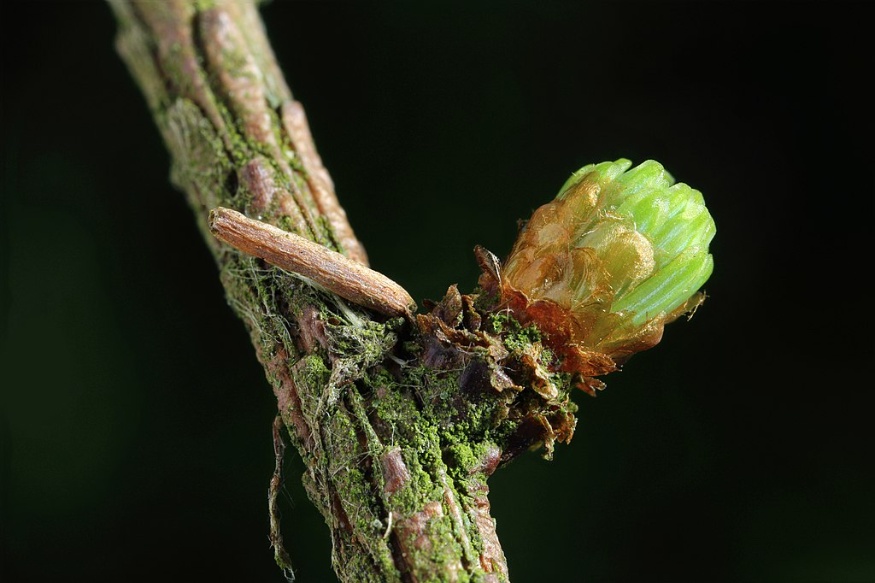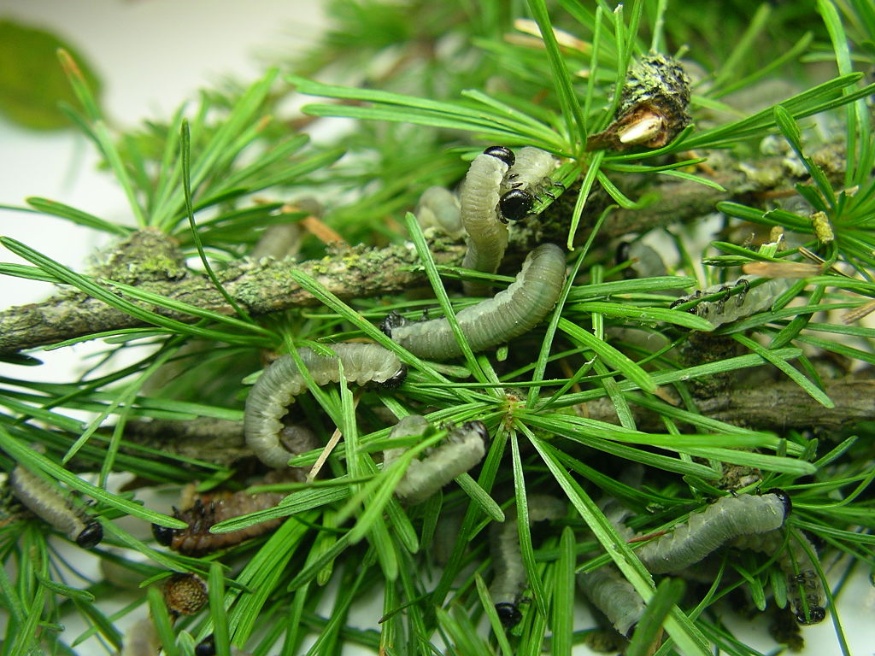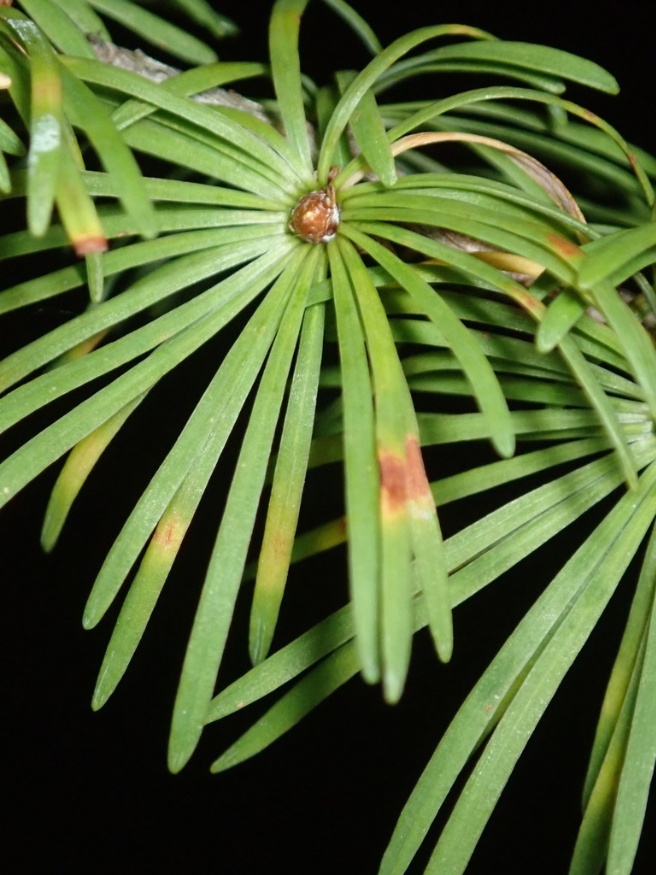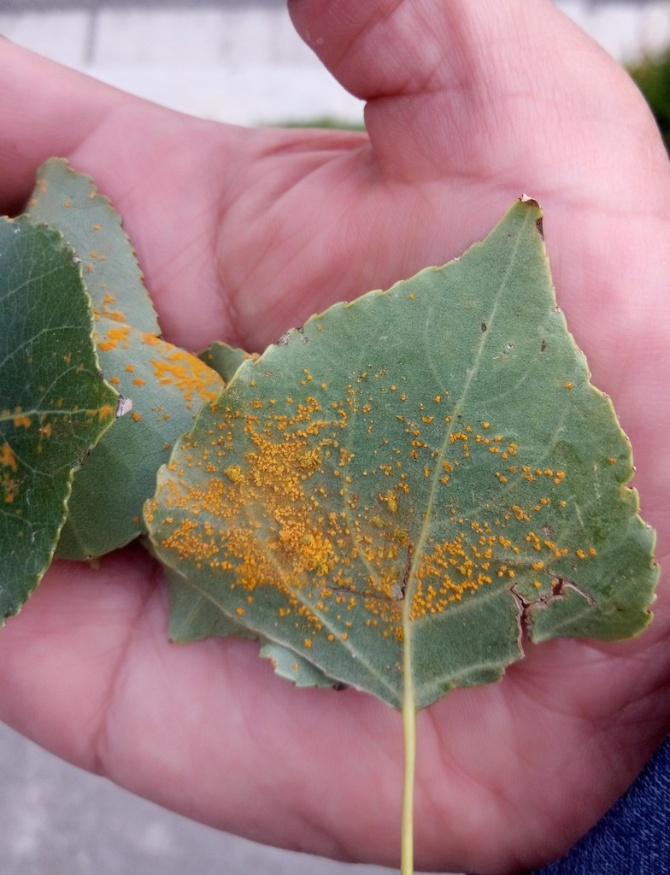Three Common Diseases of Tamarack
Here are potential Pest/Disease issues to look out for, affecting tamarack (larch) of North America...
Larch Case-Bearer
Affects our native larch trees as well as ornamental larches (usually the European larch). Native to Europe, it was introduced into North America in the late 1800's. The adults are small gray moths. Moth larvae bore into needles in late summer causing browning and heavy defoliation. Tiny, brown, cigar-shaped pupae cases can be seen near twig buds after needles shed in winter. Dry, brown needles on large portions of the canopy are a sign of the case-bearer. Control could involve spraying with insecticides in early May or using Agathis pumila and Chrysocharis laricinellae parasites for biocontrol.

Larch Sawfly
A combination of damage caused by the egg laying of small wasp-like insects and the feeding of their caterpillar-like larvae. Egg laying from the adult sawfly cause young shoots to dry out and curl, which stops them from growing. This reduces the number of buds and eventually results in crown deformation. The larvae can cause mass defoliation within the canopy. Control involves shaking off infested branches, raking fallen cocoons and debris in the spring and burning them. Repeated applications of insecticides can also be used in the summer.

Rust Fungi/Larch needle cast (Hypodermella laricis)
not known to kill large trees, but can weaken them with repeated infection. Needles turn yellow, then reddish brown in early summer, shedding soon afterwards. It resembles frost damage, but the latter kills both leaves and shoots.

Poplar leaf rust (Melampsora spp) is another form of larch rust which infects poplar trees as an alternate host. The main difference being the fruiting bodies (spores) that are produced on leaves. Control involves Isolating plants from others that are infected or grow larch seedlings beyond range from where the disease has been known to occur.

References
Agriculture and Agri-Food Canada (2020). Larch sawfly retrieved from https://www.agr.gc.ca/eng/agriculture-and-the-environment/agricultural-practices/agroforestry/diseases-and-pests/larch-sawfly/?id=1367419008793
Garbutt R. Foliage Diseases in Western Larch in British Columbia, ISBN 0-662-25008-7 Cat. No. Fo 29-6/38-1996E. Pacific Forestry Centre, 1996. http://publications.gc.ca/collections/collection_2012/rncan-nrcan/Fo29-6-71-1996-eng.pdf (Accessed October 25, 2018)
Natural Resources Canada. (2015). Larch needle cast. Retrieved from https://tidcf.nrcan.gc.ca/en/diseases/factsheet/1000085 (Accessed February, 05, 2021)
Natural Resources Canada (2015). Larch sawfly. Retrieved from https://tidcf.nrcan.gc.ca/en/insects/factsheet/7907 (Accessed October 25, 2018)
Ontario - Ministry of Natural Resources and Forestry. (2020). Larch casebearer. Retrieved from https://www.ontario.ca/page/larch-casebearer
United States Department of Agriculture. (n.d.). Melampsora Rust. Retrieved from https://www.fs.fed.us/r3/resources/health/field-guide/fd/rust.shtml (Accessed February, 05, 2021)